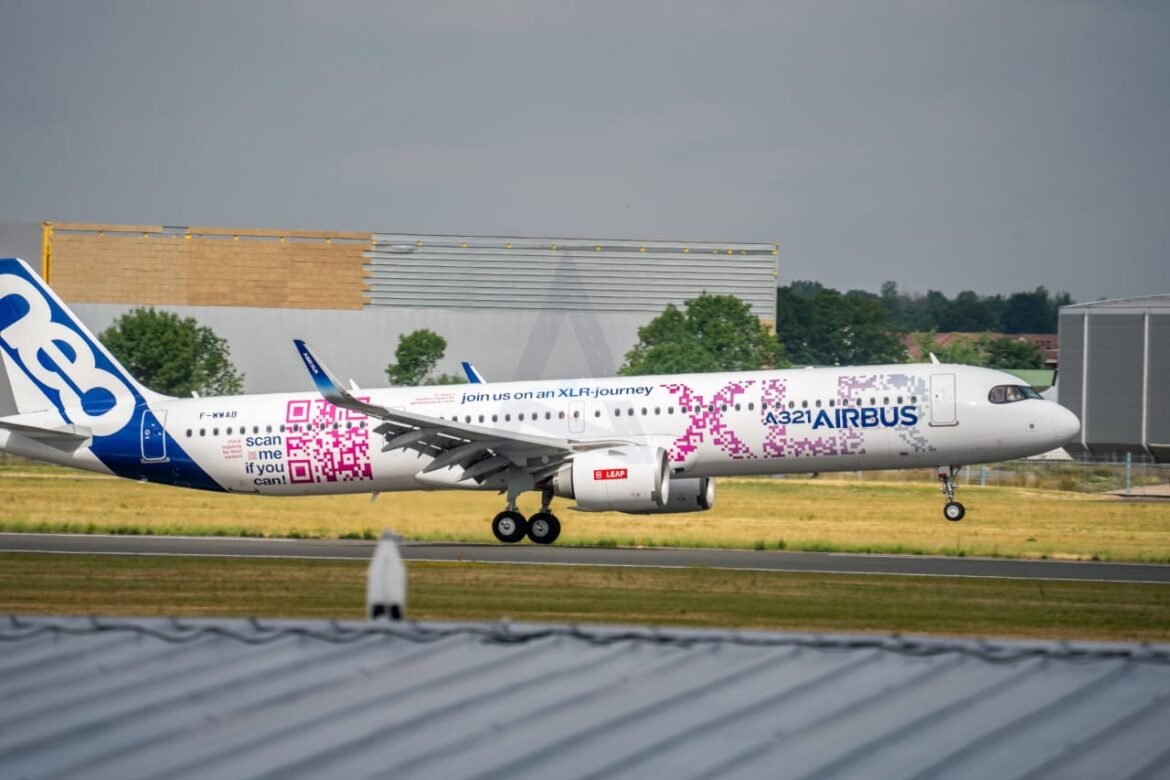Airbus has reached a significant milestone in the development of its highly anticipated A321XLR as it enters the final stages of certification and flight testing. This advanced variant of the A321neo family is poised to revolutionize long-range travel with its exceptional range, efficiency, and versatility.
The A321XLR, designed to meet the evolving needs of airlines and passengers alike, boasts an impressive range of up to 4,700 nautical miles (8,700 kilometers) – making it the longest-range single-aisle commercial aircraft in the world. This extended range capability enables airlines to open up new routes and connect distant destinations with greater efficiency and cost-effectiveness.
As the A321XLR progresses through the final certification and flight-testing phase, Airbus is conducting rigorous tests to validate the aircraft’s performance, reliability, and safety under various operating conditions. This comprehensive testing program encompasses a wide range of parameters, including flight handling characteristics, systems functionality, and endurance testing to ensure that the aircraft meets or exceeds regulatory requirements and industry standards.
The A321XLR’s advanced design and innovative features make it ideally suited for a diverse range of missions, including transatlantic flights, intra-continental routes, and high-density operations. With its spacious cabin, superior fuel efficiency, and state-of-the-art technology, the A321XLR offers airlines unmatched flexibility and profitability in their operations.
One of the key highlights of the A321XLR is its ability to serve as a cost-effective and environmentally sustainable alternative to wide-body aircraft on long-haul routes. By offering lower operating costs and reduced emissions compared to larger aircraft, the A321XLR enables airlines to optimize their fleet strategies and minimize their environmental footprint while maximizing profitability.
Moreover, the A321XLR’s commonality with the existing A320neo family of aircraft provides significant benefits for operators in terms of fleet integration, crew training, and maintenance efficiency. Airlines that already operate A320neo family aircraft can seamlessly incorporate the A321XLR into their fleets, minimizing transition costs and accelerating time to market for new routes and services.
With its unparalleled range, efficiency, and operational flexibility, the Airbus A321XLR is poised to reshape the future of long-range air travel. As airlines look to recover and rebuild in the wake of the COVID-19 pandemic, the A321XLR offers a compelling solution for meeting evolving passenger demand and market dynamics in a sustainable and cost-effective manner.
In conclusion, Airbus’s progress in the final certification and flight-testing phase of the A321XLR marks a significant milestone in the aircraft’s development journey. With its game-changing capabilities and unmatched versatility, the A321XLR is poised to set new standards for efficiency, performance, and sustainability in the aviation industry, ushering in a new era of long-range travel for airlines and passengers around the world.

